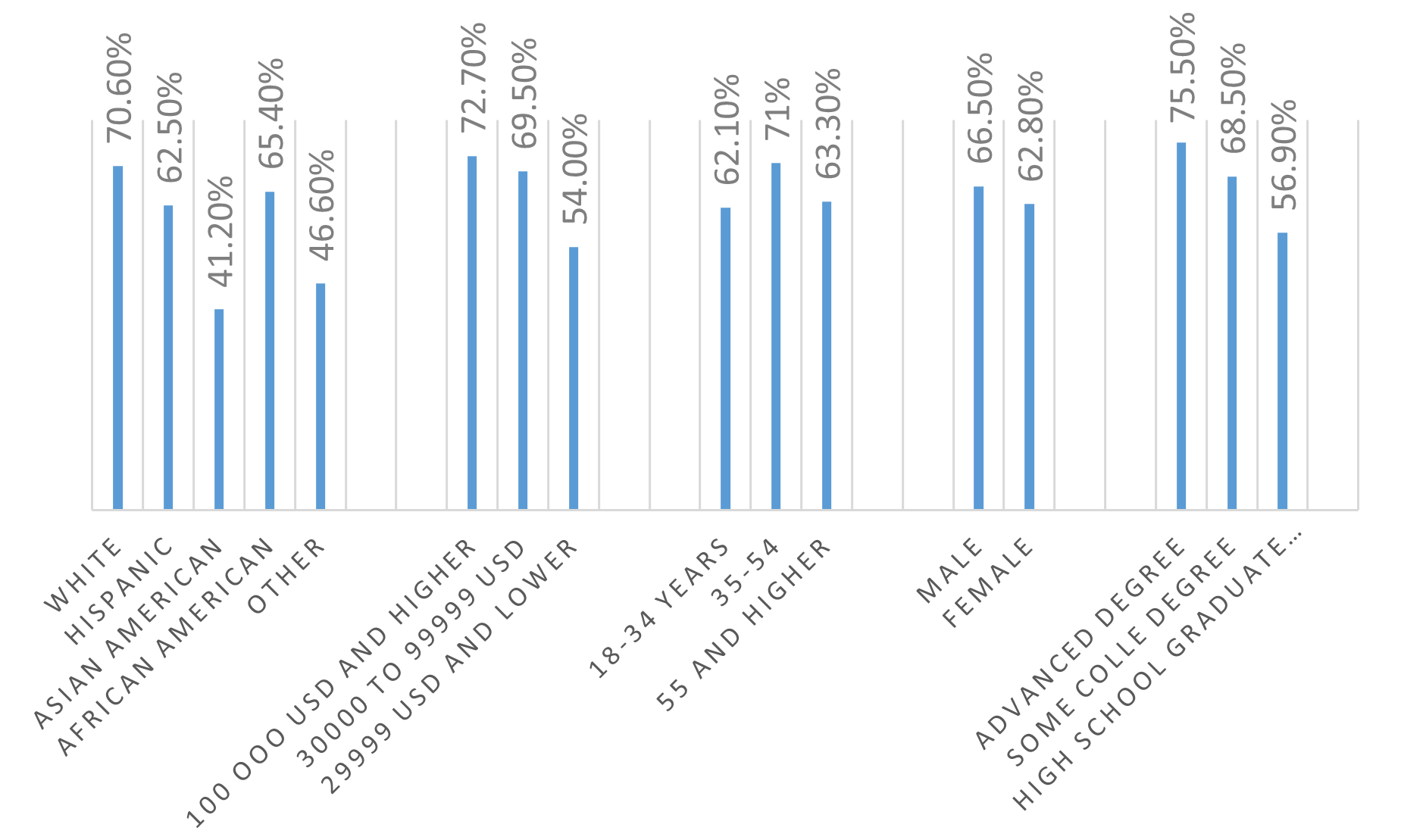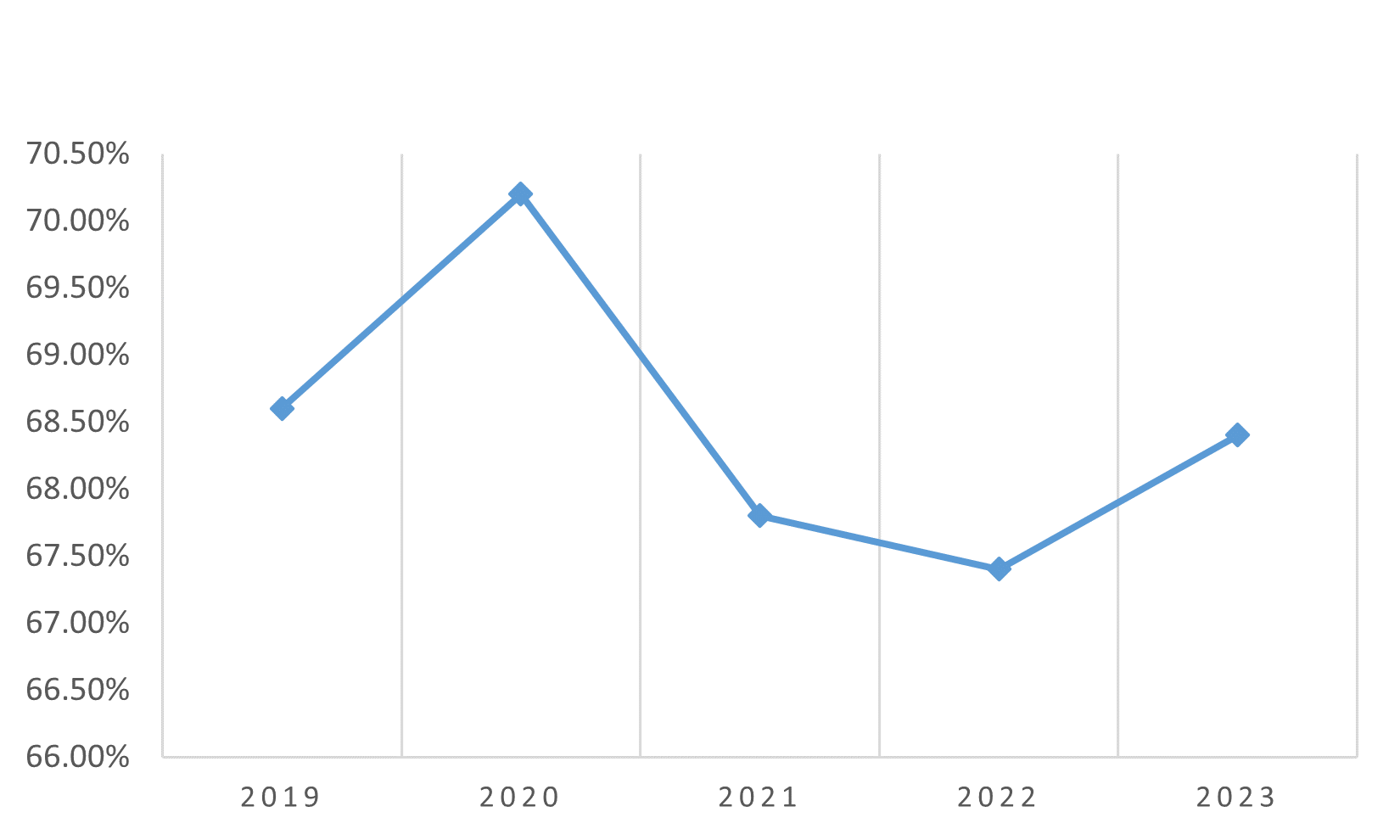Strong Community Connections
2.05 Online Service Satisfaction Rate
Summary of Findings:
- Race/Ethnicity:
Trust levels are highest among White respondents (70.6%), followed by African American (65.4%) and Hispanic (62.5%). Asian Americans show the lowest trust at 41.2%, indicating a potential area for targeted outreach or improvement. - Income Levels:
Trust increases with income: 72.7% for those earning $100,000 or more, compared to just 54.0% for those earning $29,999 or less. This suggests that economic stability may correlate with higher trust in law enforcement. - Age Groups:
The 35-54 age group exhibits the highest trust (71.0%), while the 18-34 group shows the lowest (62.1%). This may reflect varying life experiences and perceptions of law enforcement across different age cohorts. - Gender:
Male respondents report a slightly higher trust level (66.5%) compared to females (62.8%). This gap, while not large, indicates a difference in perceptions of police. - Education Level:
Education appears to significantly impact trust; those with advanced degrees show the highest trust (75.5%), while trust decreases to 56.9% among high school graduates or less. This trend suggests that education may influence attitudes towards police. - Trends Over Time:
Trust in police has shown slight fluctuations over the years, with a peak in 2020 (70.2%) and a recent figure of 68.4% in 2023. Overall, trust remains relatively stable but suggests potential concerns for ongoing engagement with communities.
Conclusion:
The data indicates that police trust varies significantly across demographic groups, with notable trends linked to race, income, age, gender, and education. Addressing the disparities, particularly for Asian Americans and lower-income individuals, could enhance overall community trust in law enforcement.

